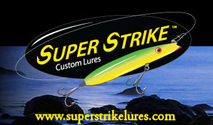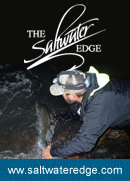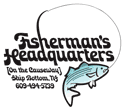Today we have a blog post by a friend of the Surfcaster’s Journal, Charlie Witek. This is not an “official” position of any organization, but rather the views of a long-time striped bass angler who is intimately familiar with the Connecticut fishery, having fished it actively before, during and after the collapse of the 1970s-‘80s, and still spends some time up there each season. And who thinks that this is a dumb idea.
BTW..check out the online store…more on that tomorrow
Zeno
By Charles Witek
In the last edition of the Surfcasters’ Journal, I wrote a piece that examined the “gamefish” debate. In it, I noted that when arguing in favor of “gamefish status,” the most difficult argument to make was the argument that “gamefish status” was a conservation measure, and the most difficult criticism to rebut arose when commercial fishermen characterized “gamefish” as nothing more than a “fish grab” clothed in the trappings of conservation. Recent actions in Connecticut demonstrate why that is so.
Connecticut was probably the first state to adopt “gamefish status” for stripers, doing so, if I recall correctly, sometime in the 1950s. Before that, its commercial harvest was modest. The Atlantic States Marine Fisheries Commission currently gives the state a 23,750 pound commercial allocation which, until recently went unused, and was “reinvested” into the spawning stock. A couple of years ago, that changed. Connecticut asked ASMFC for, and was granted, a special harvest of immature (22-28 inch) striped bass, which would take place in the upper reaches of the Connecticut River. Two of the arguments in favor of the special season were that it would protect the badly depleted stocks of river herring that get bunch up around the state capitol at Hartford, and that it would provide a valuable urban recreational experience for the residents of that somewhat troubled city. However, Connecticut has now expanded the harvest to all river systems within the state, and to the state’s entire coast.
In 2012, throughout the months of May and June, Connecticut will effectively have a 4-fish bag limit. Two of those fish must exceed 28 inches in length, while the other two, for which the anglers must hold “Bonus Striped Bass Vouchers” (issued free by the state at a number of locations, including some tackle shops), must fall into a 22 to 28-inch slot. Under the program, anglers in the state will be permitted to harvest up to 4,025 striped bass that would otherwise have been “shorts” under both state law and ASMFCs striped bass management plan. Connecticut urges anglers to take the small fish from a river system in order to protect river herring, or to use them to introduce a child or other new angler to recreational fishing. However, there is no requirement that they do so.
Unlike programs in other areas, such those in New Jersey and Delaware which permit anglers to take small fish in certain waters, under the theory that they will be non-migratory males not essential to the spawning stock, the Connecticut program will undoubtedly kill a number of immature females. I grew up in western Connecticut, at a time of my life that allowed me to be on the water just about every day, and am intimately familiar with the fishery. Late May and early June is prime time for school stripers in Long Island Sound, and is a time when fish from all of the major spawning areas—Chesapeake Bay, the Delaware estuary and the Hudson River—are present. When fishing the Connecticut shore during May and June, I’ve caught tagged fish, and I have tagged fish that were later returned from the major spawning rivers, so the question of migratory females being present is not opens for debate. Certainly, the 4,000 or so fish that will be taken under the program are hardly a blip when compared to all of the bass caught along the coast over the course of the year, but still…
How does Connecticut’s action affect the chances for the Massachusetts “gamefish” bill? Massachusetts has the biggest commercial quota on the coast (excluding Chesapeake Bay), and outlawing the commercial fishery there would make a far larger contribution to the spawning stock—provided that the fish weren’t merely handed over to the recreational sector to be killed by them instead. Every time the “gamefish” issue arises anywhere on the coast, the classic commercial response is that “gamefish status” is not a conservation measure, but in reality a “fish grab” that switches allocation between sectors, but ultimately does nothing to increase the striped bass population. Connecticut’s action, following upon New Jersey’s much older “bonus fish” program, is just more ammunition that the commercials have to demonstrate that their claim is true.
Anglers in favor of “gamefish status” now have a decision to make. They can come out on the side of conservation, and explicitly disclaim any additional harvest that would become available to them as a result of a commercial fishing ban. If they do that, they can legitimately hoist the banner of conservation, and work not only to end the commercial fishery, but to increase the spawning stock so that more fish might ultimately be available for all. On the other hand, if they want to see their state institute a “bonus fish” program, they should be honest with legislators, regulators and the public at large, and set forth their arguments on economic and policy grounds. A “bonus fish” program is certainly defensible in those terms. But it is about more dead fish for anglers, not about “conservation.”
[issuu width=420 height=162 shareMenuEnabled=false showHtmlLink=false backgroundColor=%23222222 documentId=120311004957-aa2402a5155442c7ab27bce503b9ff57 name=surfcasters_journal_issue_12 username=surfcasters_journal tag=fishing unit=px id=38ba2ca8-adb8-1562-d125-ebdeb78a3d97 v=2]












I think part of the problem with these “decisions” is that this is a black box. We hardly ever know who exactly was “behind” the proposals to expand the bag limits, and why.
It is important to understand that this decision was likely pushed pushed by specific people. In some states, I think these types of people are entrenched, with questionable ties to industry. It would be ugly to call them out, but until that happens, the management process will remain dysfunctional.
↓Gamefish status by most surf caster is Out right selfish!!!
They should practice what preach.
I wish, Weak fish got half the attention bass get.
↓Striped bass in my opinion should not be harvested in a limit-out perspective every time we fish, but I know a lot of people do this. Who needs that much fish? Most likely ends up with freeze burn anyway. I am not saying I do not harvest fish, because I do, but I have never taken more than two a season to the dinner table. I prefer the sport in the hunt for these fish. That being said, maybe the Striper states should adopt something more similar to Alaska’s Salmon tags. Tags around 10-15 dollars a piece for salmon in AK on top of your license cost, and maybe a limit similar to hunting where you are allowed say 2 deer/season. This COULD keep the total annual harvest numbers down, increase revenue for marine research and ever expanding budgets, and still produce food for the table (or you don’t buy the tags if you fish catch n’ release). Also, don’t complain about coughing up another 20-30 bucks while you’re carrying around a 1500 dollar rod/reel combo it might slip.
↓Free plug give-away with response to this article.
↓We need to start by making those who make the rules a non elected post. With that said maybe the pressure by all sides would not have the weight that lobbing for one way or another holds. And all states should be held to the same rules. And we need to ask ourselves if we really want the return of the past where we cannot keep any fish.
↓The way to true conservation is to not buy Stripped Bass at the fish market. And to only keep 2 fish a year. the tag system might be the way to go. but make it reasonable. not everyone who fishes carries $1500 combos.
I know, I’ve got a 70 dollar Dick’s Sporting Goods special lol. I was just trying to push buttons to try to incite some more responses to this, Charles article in the SJ mag was excellent and I was happy to see this blog entry as a follow-up.
↓Some cliches come to mind-“If you’re going to talk the talk, then you better walk the walk,” “the road to hell is paved with good intentions” and “be careful what you wish for, you just might get it.”
↓I like the idea of having to buy tags to keep fish. Guys who fish a lot certainly don’t need to keep two fish per day. I keep a few each season and give most away to friends who really enjoy fish. There’s nothing wrong with that.
We need to remember that the fishing industry revolves around supply and demand. When one species is hard to catch, commercial fisherman fish another. That’s fine they need to make a living. Who hasn’t ordered fish for dinner in a restaurant? We must also remember that recreational fisherman depend on the commercial guys for bait-eels, bunker, clams, etc.
Both sides must unite to protect fisheries and adopt sound conservation policies.
Do party boat regualars really need to keep two fish per day? Probably not. However, restrictions would certainly hurt the party boat business as it caters to recreational anglers. Shouldn’t we encourage people to fish more? There’s no simple answer. As I said earlier, I like having to buy tags, and a slot limit would be a better way to go. Maybe 1 fish between 28 and 34″ and another over 40. Perhaps tags could be sold by the size of the fish the angler prefers to keep.
↓Interesting article – nice to read other viewpoints. Do not agree with his conclusions.
DZ
↓Thanks Charles W. This is one of the healthiest conversations I have read on this issue in a long time. We sure can get blinded by some of our own motives. Thanks
↓I have enjoyed reading this discussion on the gamefish status, but I would like to see Mr. Witek consider one other aspect with regards to commercial fishing. If the bass are granted gamefish status everywhere their sale would be outlawed. How many fish are now caught one place and sold another? How many fish are now caught over quota and sold anyway? How many fish are killed and thrown over the rail because they are not big enough (or a bigger one is caught)? I read one place (I think in SJ mag.) that the poaching of bass may be equal to the actual quota. Gamefish status everywhere greatly helps enforcement put an end to that. Can, or will, a recreational person take more or smaller fish that are allotted? Sure, but the monetary motivation is not present and poaching would be far less, I would think. Also, every other person on the beach can help with the enforcement, which is impossible with the commercial harvest. I realize this is not an easy variable to qualify, but I would like to see it mentioned and considered by someone with as much reasoning as Mr. Witek.
I agree that the commercial quota should not just be reallocated, but allocation to the recreational sector is still more conservation than to the commercial sector, in my estimation.
↓